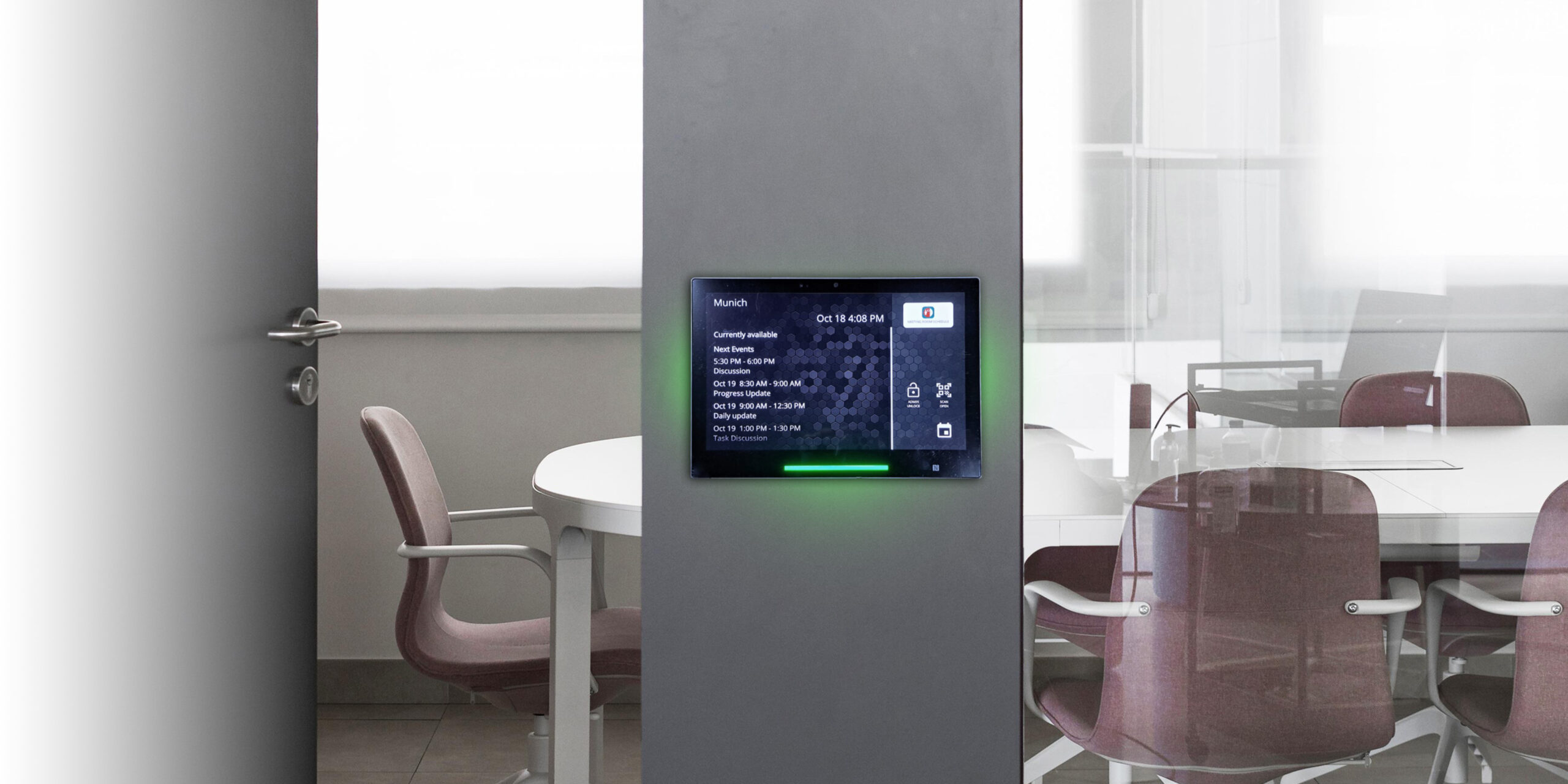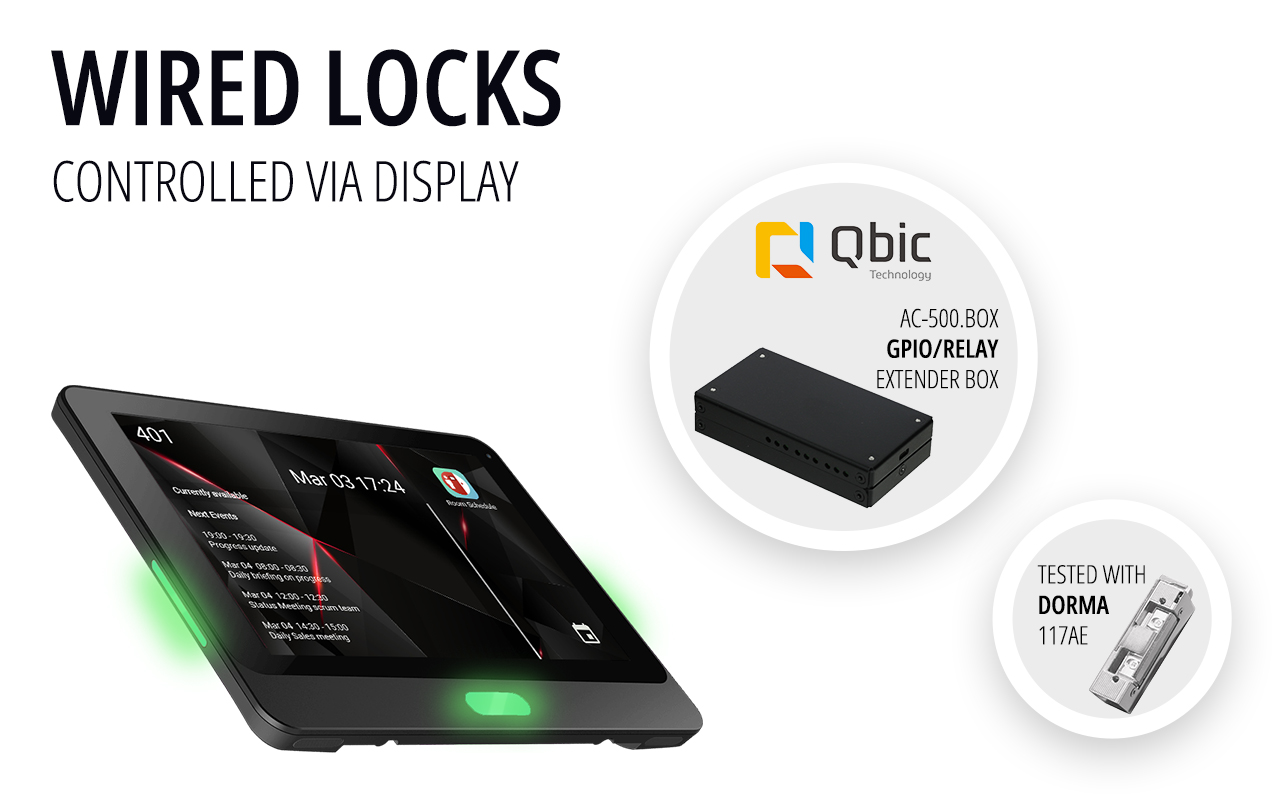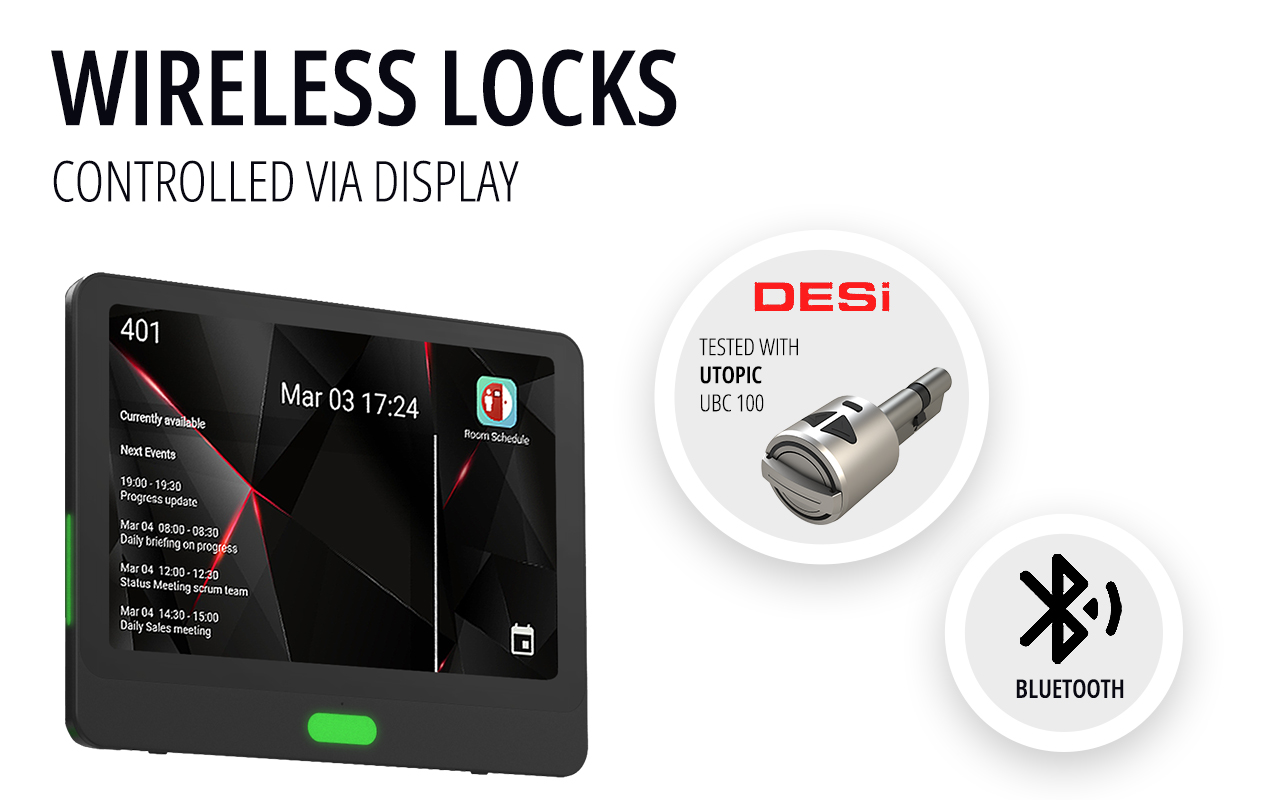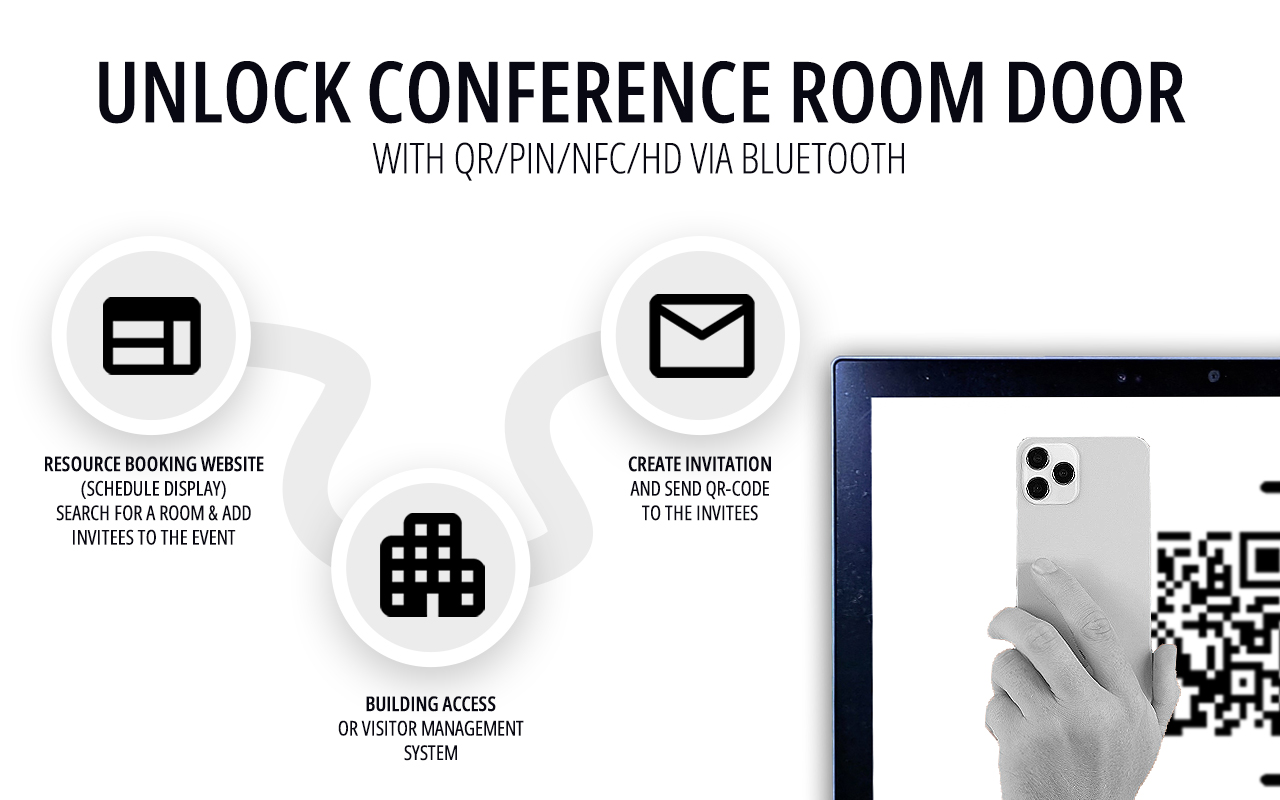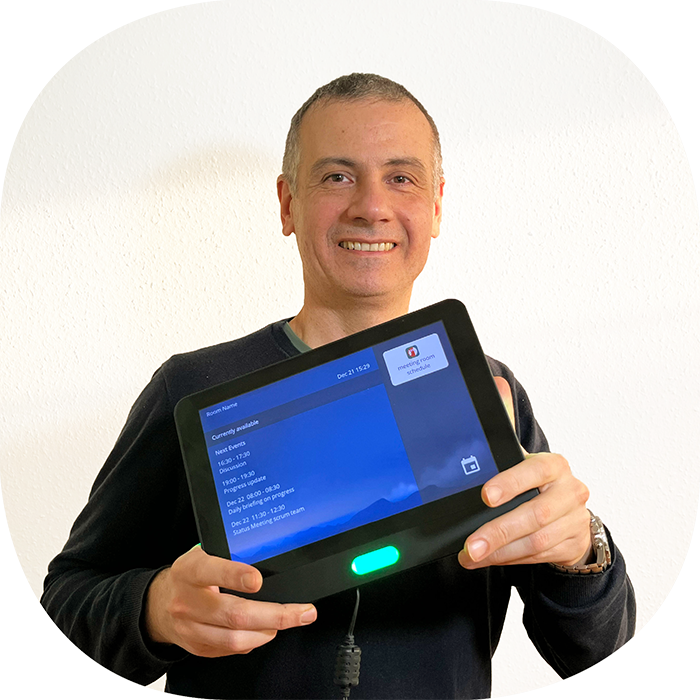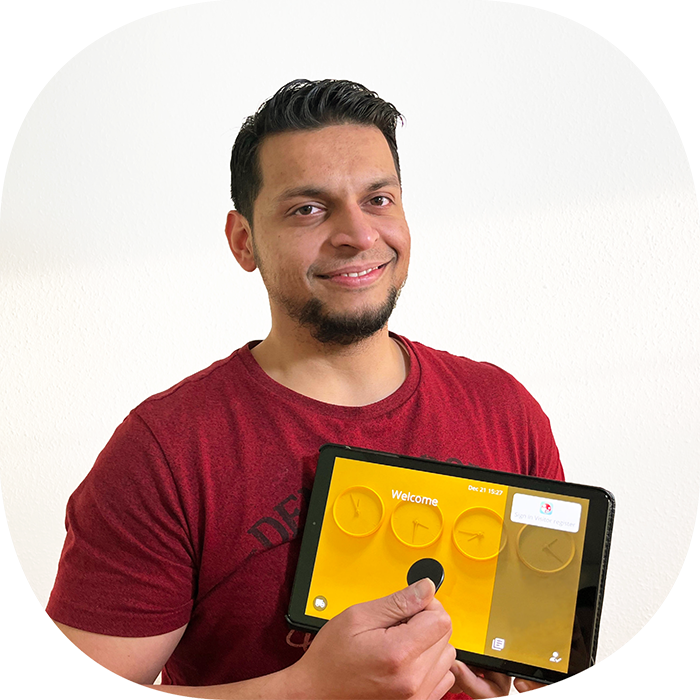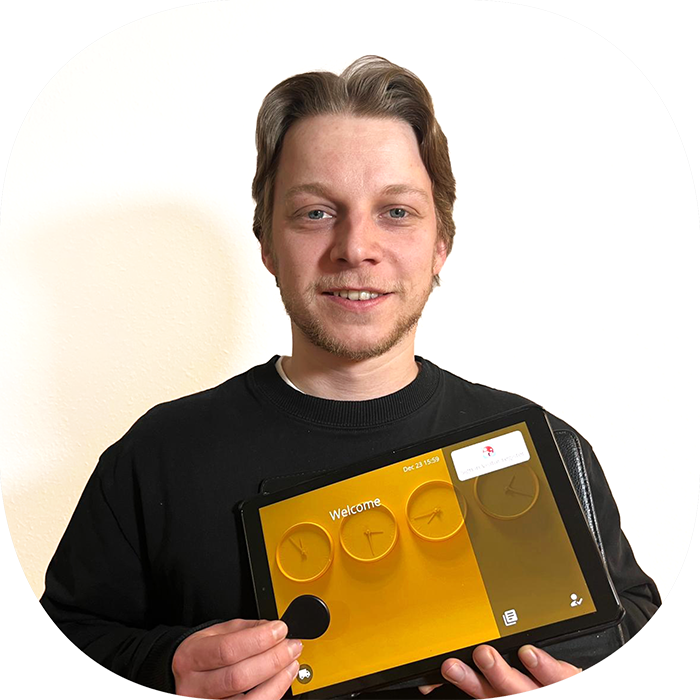Wired locks with card readers and buzzers are common elements of office access control. If we talk about automation, one scenario of conference room access control is to open doors when a meeting begins. After the event, meeting room doors can be auto-locked. If someone is left inside the room, an exit button next to the meeting room door is there to unlock manually. Wired, magnetic doors can be opened using the relais of the GPIO module AC-500. Multiple scenarios can be set to match daily operations for hosts, visitors, caterers, or cleaning staff. In our example, we used the Dormakaba 117AE that is an electric strike lock (power to unlock). Other locks can be adapted, for example timed output.
The touch display can be set to ask for authorization. User rights can be managed to restrict check-in, booking, or releasing meetings. The identification of user groups can be important if the room’s usage is monitored or even charged.
Locks can be opened using chipcards, keyfobs, or entering a PIN on the tablet display. This behavior can be combined with meeting room automation scenarios.
